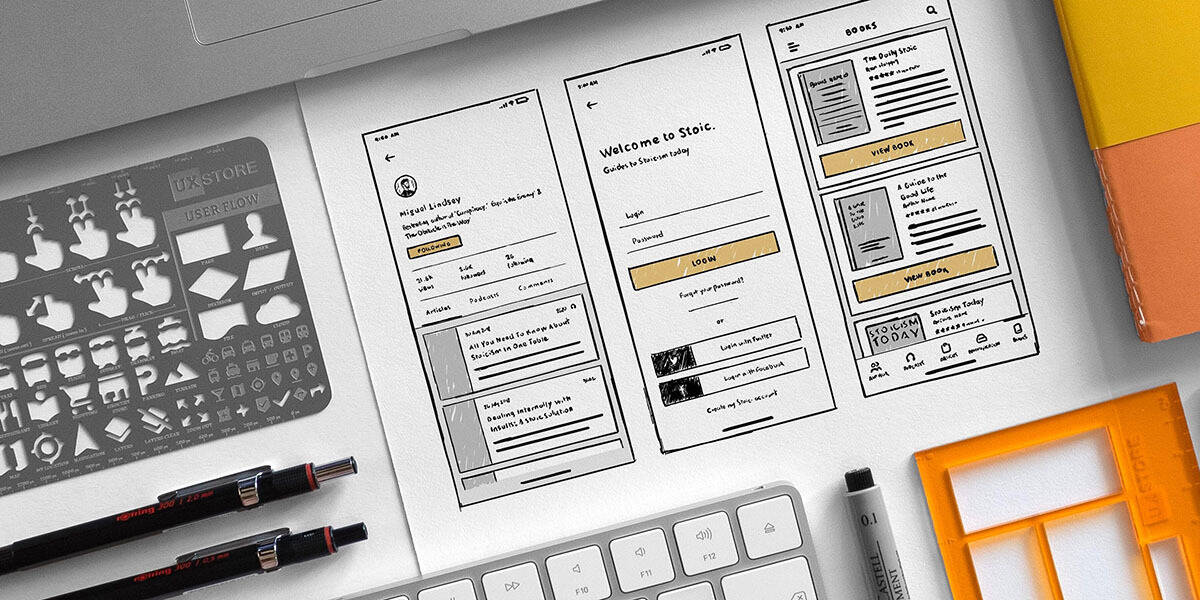The days are gone when defining a user experience was limited to the choice of designers. Designers rely on their own experience to design a product. In the selection of features, layout, colors, theme and style, the opinions of designers or senior stakeholders of the organizations were preferred.
Time has changed. The work of designers became easier and more meaningful when they started realizing the value of data in their jobs. Data is an essential part of the design process. In a world where organizations are facing tough competition, designing a product without collecting and analyzing real data will rarely lead to success.
The key to an amazing user experience is a user-centred design process.
User-centered design (UCD) is an iterative design process in which designers focus on users and their needs in each phase of the process. The designers involve the users throughout the design process in order to develop a highly usable product for them.
Data can help you stick with the users-first approach while designing your products. So, it is important to know:
- Why data is an essential part of the design process?
- How to collect data?
- How to use that data to improve user experience?
If you know the answers, integrating data into your design process will become essential for you. Let's look at a few aspects of integrating data into your design process and how it can help.
1. To identify users' needs
The first and foremost step of the design process is to know about your users, their needs, goals, challenges and motivations by conducting user research. Different methods are used to conduct user research including interviews, questionnaires, and observations in the real environment. The outcome of this research is user personas and clear requirements.
When you are conducting user interviews, you are asking a few questions to the users. The answers given by them is data for you. When you are getting answered questionnaires by users, you are getting data related to your questions. When you are observing users in their real environment, you are collecting data about their behaviors and challenges.
You have collected data about your users. This data will help you to create effective user personas, to know about your users' goals, and the tasks they are going to perform to achieve those goals.
For example, you want to launch a site for online courses where you will provide your audience with different courses for enrollment. You need to know: what are the different roles for whom you need to provide the courses? What are the areas that the users will like to learn about? How will they earn course certificates? To know these answers, you will conduct a survey in your target industries and meet with real users and collect the required data. This data will help you to create effective user personas.
2. To define user flows
When the requirements are clear and user types are identified, you as a UX designer start designing the product. The user flows define the user interactions with your product. Using the data produced by User personas including user segmentation, their goals and behaviors. It becomes easier to know how your users will interact when he/she is using your product and what path they will follow to complete the desired tasks.
Only through understanding your users' behaviors and motivations will you be able to create meaningful user flows.
For example, to create the user flows for your online courses site, you need the following information: How the user will find courses on your site? How can they register themselves into courses? How can they access the course content? Again, data is the only way to know answers to these questions and then use that data to define user flows that will help your users.
3. To provide a personalized experience
Based on data, you can provide a customized and personalized experience to your users. A personalized experience will give a special feeling to the user and help to increase his/her trust in your product. For example, Netflix, YouTube and Facebook display the content that the user may want to see based on the data collected by his/her previous actions with these applications. Now in this digital world, the data collected by smart devices can easily be used to define a personalized experience for the users.
To provide a personalized experience to your users in your online courses site, you need to observe the interactions of your users within your site. You can use an analytics tool to collect information about: How a user is interacting with your site; What courses he is searching on your site; What pages he spends the most time on. You will collect this data and analyze it to provide your users a personalized experience.
4. To redesign the experience
Redesigning and improving your older products is always a good practice to enhance user experience. One way is to follow your own instincts and experience and then start redesigning. But this exercise will not benefit you if you are not doing what your users want. So, use the data from your product analytics reports and see how users are interacting with your product, what features they are using the most, which features are not being used, where users are spending most of their time, where users stop using your product, etc. Visualizing and analyzing this data will give you a real picture of what users want to see in your product and will help you make better design decisions.
To redesign your online courses site, you will use an analytics tool and collect data about how your users are visiting your site? What are the features that are mostly being used? What are the pages that are rarely visited by any user? What are the most popular courses? Which courses the users enroll but leave them without completion? This data will help you to make design decisions for revamping the experience of your site.
Conclusion
Data and design need to be integrated together to provide the enhanced user experience for your products. Design decisions based on data can never be challenged. You need to learn about how to collect data at different design stages, how to visualize this data, and how to analyze the visualizations so that you can use these findings to finalize your design. Data-driven design validates the concept of a user-centric design approach that enforces the involvement of users throughout the design process.

